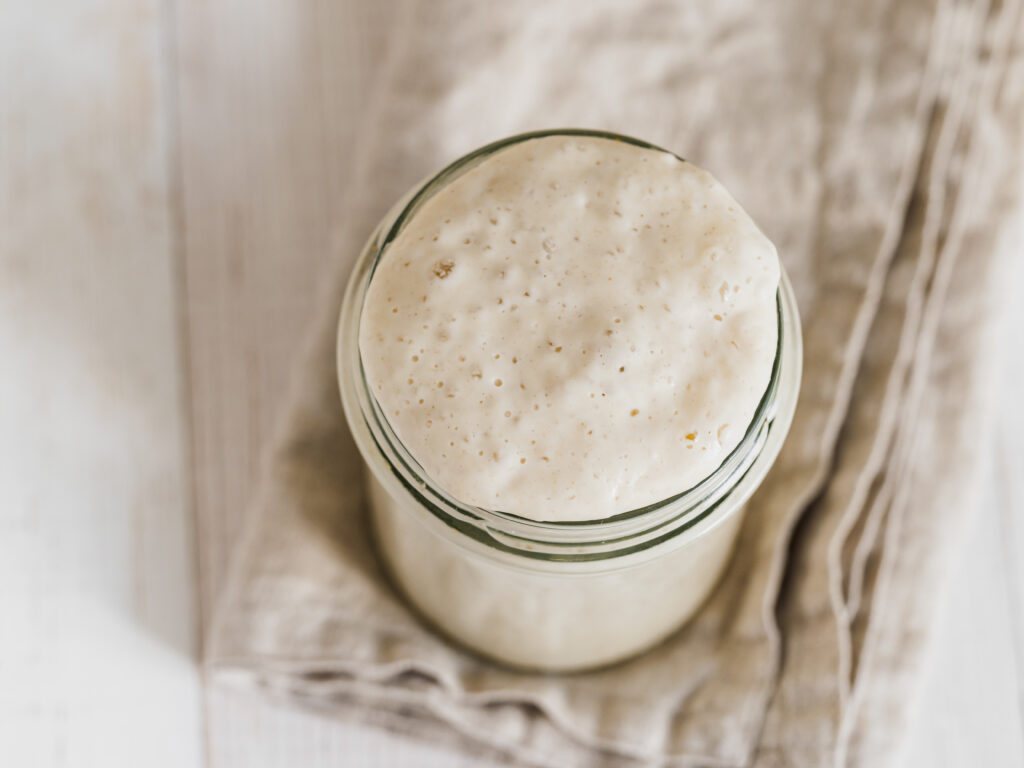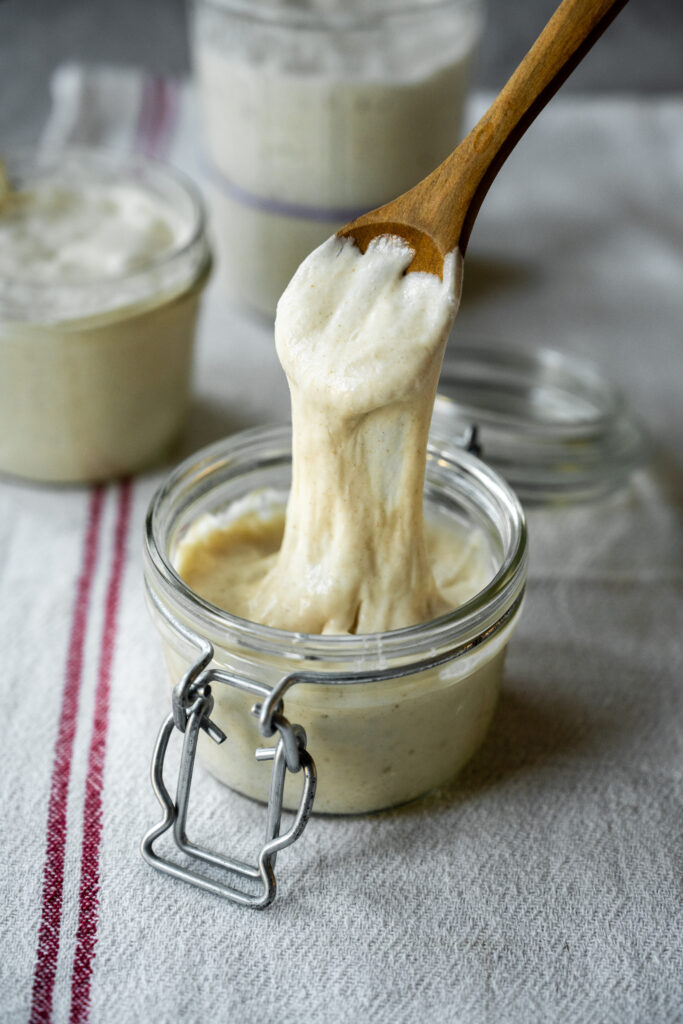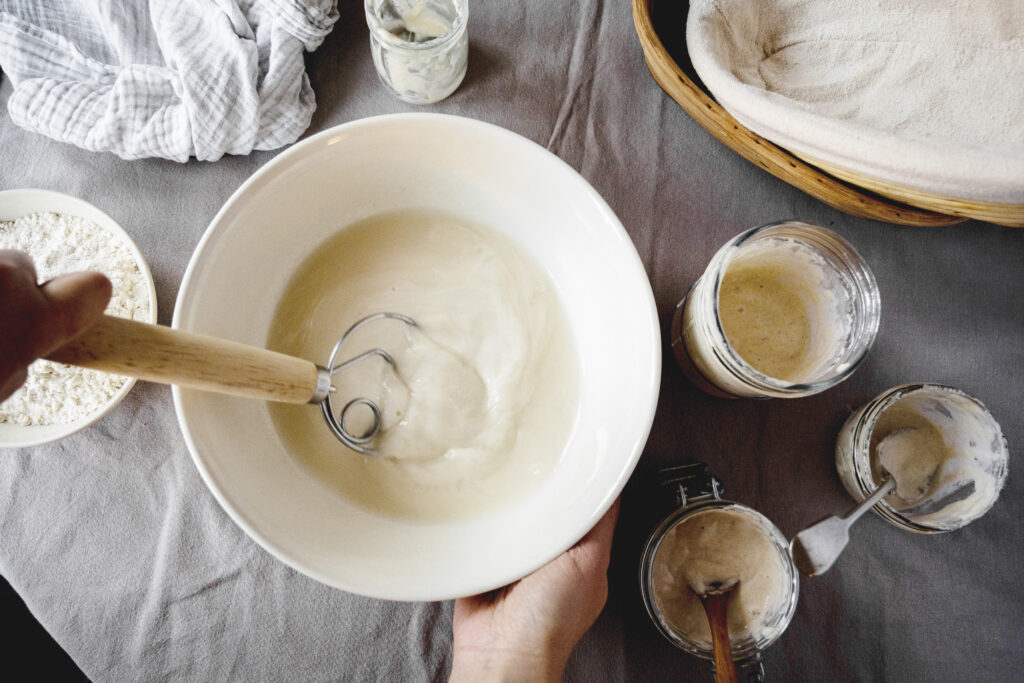
If you’ve just started your sourdough journey (or you’re thinking about it), this question always pops up: “Okay… but what exactly do I feed this thing?”
I remember standing in my kitchen, staring into this bubbly little jar like it was a new pet. And truthfully? That’s exactly what it is. A sourdough starter is alive and like any good homestead animal, it needs the right food, a little routine, and a whole lot of love.
If you’re wondering when to feed it, what kind of flour to use, and how to know if you’re doing it right… you’re in the right place.
Table of Contents

What Is Sourdough Starter, Really?
Let’s keep it simple: your sourdough starter is a mix of flour and water that catches wild yeast from the air and grows good bacteria. Every time you feed it, you’re giving those little microbes more “food” to stay active and bubbly.
This is what makes your sourdough bread rise without store-bought yeast. Pretty magical, huh?
The Basic Feeding Formula
Here’s the no-fail ratio I use on my homestead:
- ½ cup flour
- ¼ cup water
Mix until smooth and thick like pancake batter. You can adjust based on how much starter you want to maintain, but always keep it about equal parts by weight. If you’re not using a scale, just keep the consistency similar each time.
If it’s too runny, use less water. If it’s too thick, add a splash more.

When to Feed Your Starter (Daily or Weekly?)
It depends on how often you bake:
- Daily Feedings (Room Temp):
If your starter lives on your counter, feed it once every 24 hours. I like to pair it with my morning routine—right after feeding the chickens and putting on coffee. - Weekly Feedings (Fridge):
Not baking every day? Store it in the fridge and feed it once a week. Just pull it out, let it warm to room temp, discard half, feed it, and wait for it to bubble again before returning it to the fridge.
Hint: If your starter looks separated with a grayish liquid (called “hooch”) on top, it’s just hungry—time to feed!

Best Flours for Feeding Starter
All flour is not created equal. Here’s what I recommend:
| Flour Type | Pros | Notes |
| All-Purpose | Affordable + easy | Works great for daily feeding |
| Whole Wheat | Full of wild yeast | Can speed up fermentation |
| Rye | Super active starter booster | Use when your starter seems sluggish |
| Bread Flour | Higher protein | Can make starter more elastic |
Start with what you have. You can always mix and match as needed. Around here, I rotate between AP and rye depending on how wild our week is.
Troubleshooting Common Feeding Mistakes
- My starter isn’t bubbling: It might be too cold or not fed often enough. Try warmer water or switch to rye flour.
- It smells weird: If it smells like vinegar, it’s fine. If it smells rotten or moldy, start fresh.
- It’s too thin: You might be adding too much water. Aim for thick pancake batter.
Still not sure if it’s ready? Check out Why Your Sourdough Starter Isn’t Bubbling — and How to Fix It for more help.
Final Thoughts
Feeding your sourdough starter isn’t fussy. It just takes a little rhythm, a pinch of curiosity, and the same kind of love you’d give your garden, your pantry, or your kiddos.
Once you get the hang of it, it becomes second nature—like snapping green beans on the porch or prepping jars for canning.
So don’t stress, mama. Just keep feeding it. It’ll feed your family back tenfold. 💛
Happy Baking
Linnea
Related Posts to Keep the Starter Going:
- How to Start a Sourdough Starter from Scratch
- Easy Sourdough Bread Recipe for Beginners (No Kneading!)
- What’s the Difference Between a Starter and Discard?
- What Can I Make with Sourdough Discard? 15 Quick Ideas
Have questions or want to show off your bubbly starter? Tag me @homesteadwildflower
I’d love to cheer you on! 🥖✨
Linnea
#sourdoughstarter #fromscratchbaking #homesteadmama #fermentationlife
